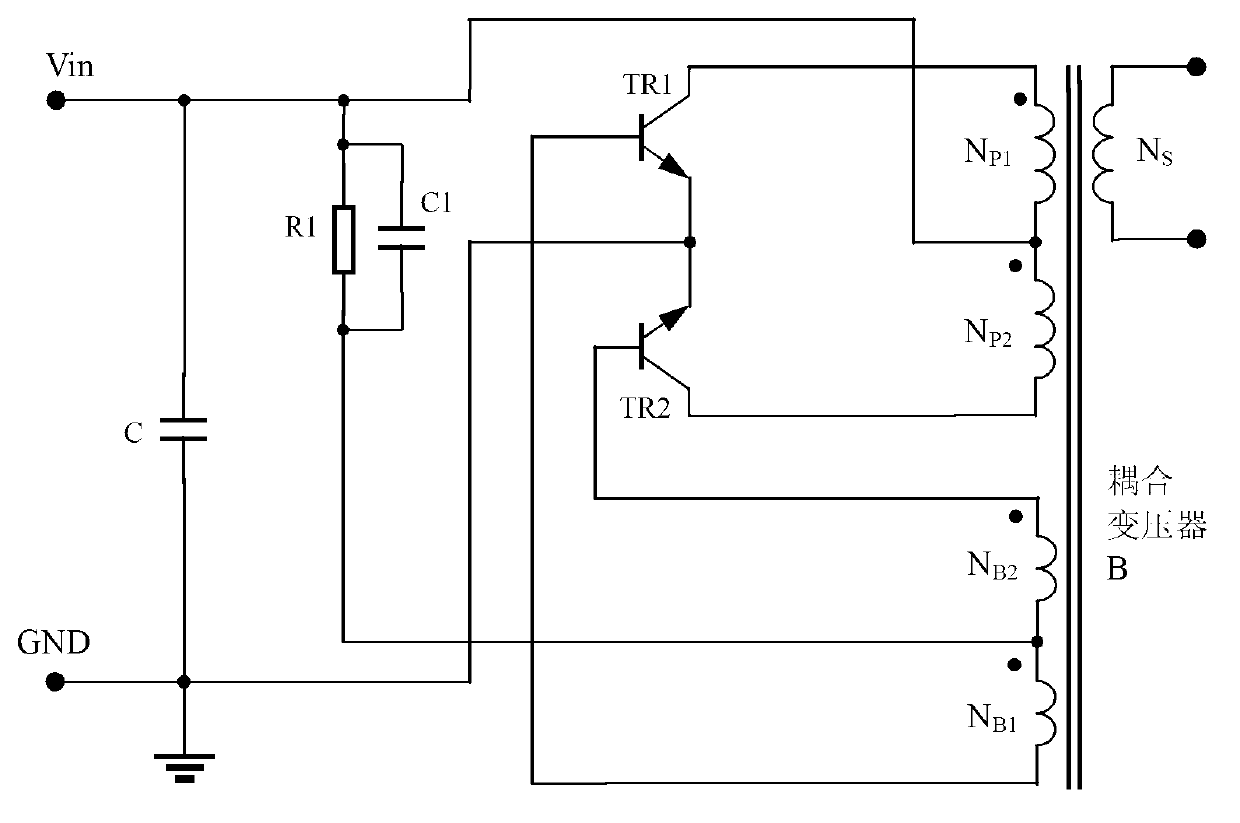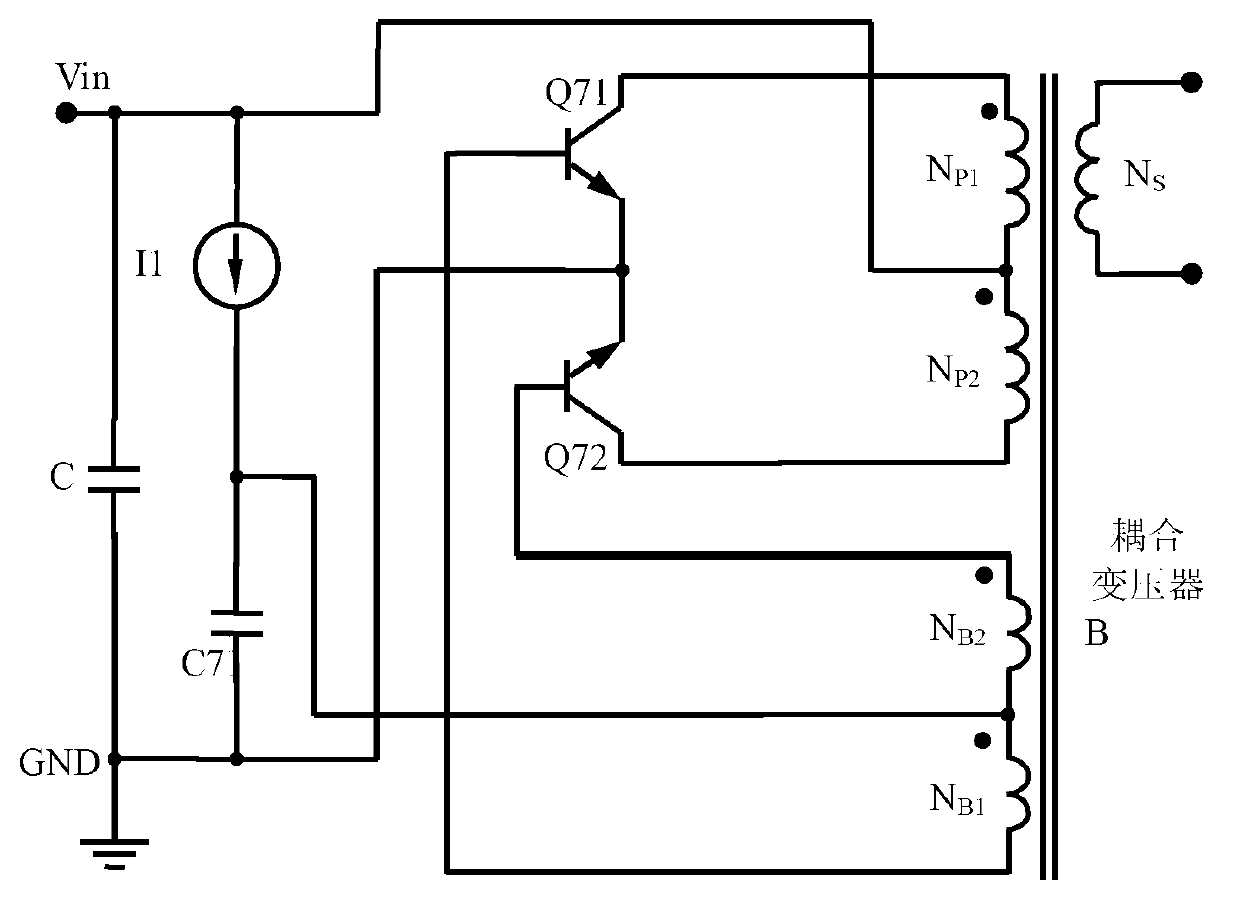Method for adjusting negative temperature coefficients of constant current source and constant current source
A technology with negative temperature coefficient and constant current source, which is applied in the field of constant current source, can solve the problems of increased circuit volume, inability to integrate, expensive thermistor, etc., achieve small size, easy integration, and improve the effect of low temperature start-up difficulty
- Summary
- Abstract
- Description
- Claims
- Application Information
AI Technical Summary
Problems solved by technology
Method used
Image
Examples
Embodiment 1
[0033] Such as image 3 Shown is Embodiment 1 of the method for adjusting the negative temperature coefficient of the constant current source of the present invention. This embodiment proposes a method for increasing the negative temperature coefficient with strong applicability and applicability.
[0034] Through the calculation of voltage, set the voltage relationship as V=αV BE -V ref Then use the operational amplifier and NMOS tube to form a transconductance amplifier. The input voltage is used as the input voltage of the transconductance amplifier. The input voltage is added to the resistor R0 to convert it into a current, which is used as the output current of the constant current source. Because the current consumed by the circuit that generates the voltage relation in the integrated circuit can be made very small (microampere level), such a small current can be ignored compared to the constant current source used in general. Then by selecting the value of the set con...
Embodiment 2
[0039] Such as Figure 4 The shown constant current source includes a power supply terminal VCC, a first resistor R11, a second resistor R10, a first transistor Q10, a second transistor Q11, a third transistor Q12 and a fourth transistor Q13, the resistance value of the first resistor R11 is much larger than the resistance value of the second resistor R10, the larger the resistance value of the first resistor R11, the better, and the ideal value is infinite, so that the constant current value of this constant current source is closer to the value passed through the second resistor The current value of a resistor R10; one end of the first resistor R11 is connected to the power supply terminal VCC, and the other end of the first resistor R11 is respectively connected to the collector of the first triode Q10, the collector of the second triode Q11 and the fourth triode The base of the transistor Q13 is connected, the emitter of the fourth transistor Q13 is respectively connected ...
Embodiment 3
[0056] Such as Figure 7 Shown is the second embodiment of the constant current source of the present invention. The difference between the second embodiment and the first embodiment is that a fifth triode Q14 is added. The other end of the first resistor R11 is connected to the base of the fifth transistor Q14, the collector of the fifth transistor Q14 is connected to the power supply terminal VCC, and the emitter of the fifth transistor Q14 is connected to the fourth transistor Q13. connected to the base of the fourth transistor Q13 so as to form a composite tube through the fifth transistor Q14 and the fourth transistor Q13, so as to improve the driving capability of the base of the fourth transistor Q13, so that the resistance value of the first resistor R11 can be further improved Increase.
PUM
 Login to View More
Login to View More Abstract
Description
Claims
Application Information
 Login to View More
Login to View More - R&D
- Intellectual Property
- Life Sciences
- Materials
- Tech Scout
- Unparalleled Data Quality
- Higher Quality Content
- 60% Fewer Hallucinations
Browse by: Latest US Patents, China's latest patents, Technical Efficacy Thesaurus, Application Domain, Technology Topic, Popular Technical Reports.
© 2025 PatSnap. All rights reserved.Legal|Privacy policy|Modern Slavery Act Transparency Statement|Sitemap|About US| Contact US: help@patsnap.com



